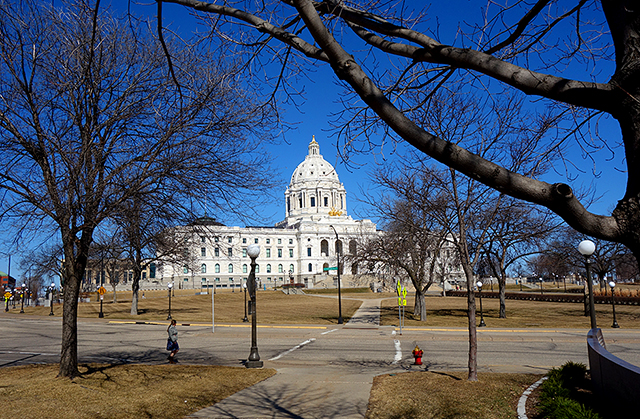Just weeks ago, we passed the one-year anniversary of the World Health Organization’s formal identification of the COVID-19 outbreak as a full-blown pandemic. For the last year, life has completely transformed in unimaginable ways, with everyone around the globe collectively experiencing an overwhelming amount of worry, fear, uncertainty and loss.
During this time, one group that quickly emerged was the change-makers, the people and organizations who rose to fill the new and urgent needs of their communities. Here in Minnesota, our nonprofit organizations and their staff have dedicated themselves to being change-makers, quietly and expertly operating on the front lines of the pandemic since day one.
When COVID-19 hit, Minnesota’s nonprofits immediately shifted their focus to address critical community needs in a safe, socially distanced way, from drive-thru food shelves to child care for essential workers to connecting people to state resources. Our nonprofits’ deep experience and commitment to the well-being of each community member in all phases of life – and all phases of the pandemic – has helped communities persevere, in more ways than one.
However, the growing demand for services and increased operating costs during the pandemic have outpaced revenues for many nonprofits. According to the Minnesota Council of Nonprofits’ “State of Nonprofits” report, 72 percent of organizations surveyed reported having less than six months of available cash reserves, with 40 percent reporting no operating reserve. This has forced many nonprofits to reduce their budgets, programming and hours. At the same time, nearly 40 percent of the state’s nonprofit workers filed for unemployment insurance in 2020 due to reduced hours, temporary furlough or job loss.
We know that these funding shortfalls and cuts in staff, services and programming have had the greatest impact on Minnesotans of color, who have also been disproportionately impacted by COVID-19 and are often clients of nonprofit organizations. According to the Minnesota Department of Employment and Economic development, 60 percent of Black workers and over 50 percent of Indigenous workers have filed for unemployment insurance benefits during the pandemic, further widening historic disparities and systemic inequities.
That is why we are calling on Gov. Tim Walz and the Minnesota Legislature to leverage federal emergency relief dollars to establish a nonprofit resiliency and recovery fund. This much-needed resource would provide financial support for nonprofit organizations, which make up 13 percent of Minnesota’s workforce and play a key role in connecting residents to critical human service supports and other resources. It would also simultaneously maintain and create much-needed jobs, which are critical to improving recovery outcomes for communities across the state.
The increased demand for nonprofit services will continue well beyond 2021, and philanthropy and private donations alone cannot sustain our nonprofits. An investment in Minnesota’s change-makers is an investment in Minnesota’s future. Supporting our state’s nonprofit organizations will strengthen community pathways to recovery and build a brighter future for all.

[image_caption]Steve Houtz, Doris Pagelkopf, and Jon Pratt[/image_caption]Steve Houtz is the president and CEO of Metropolitan Alliance of Connected Communities; Doris Pagelkopf is the executive director of United Ways of Minnesota; Jon Pratt is executive director of the Minnesota Council of Nonprofits. Also contributing to this commentary were Susie Brown, president of the Minnesota Council on Foundations, and John Wilgers, president and CEO of Greater Twin Cities United Way.






